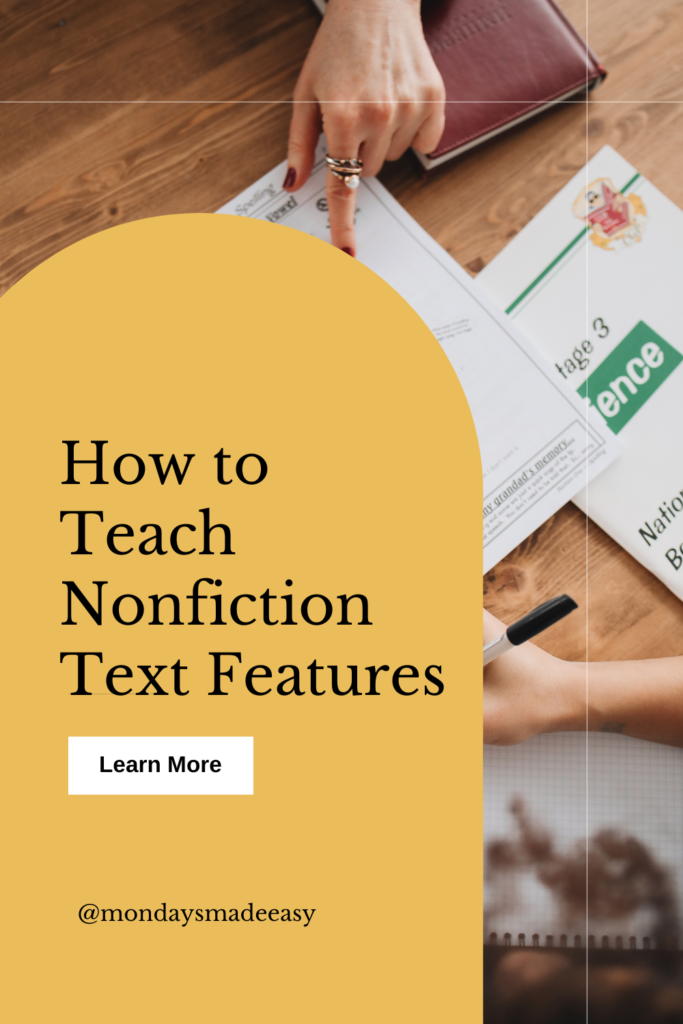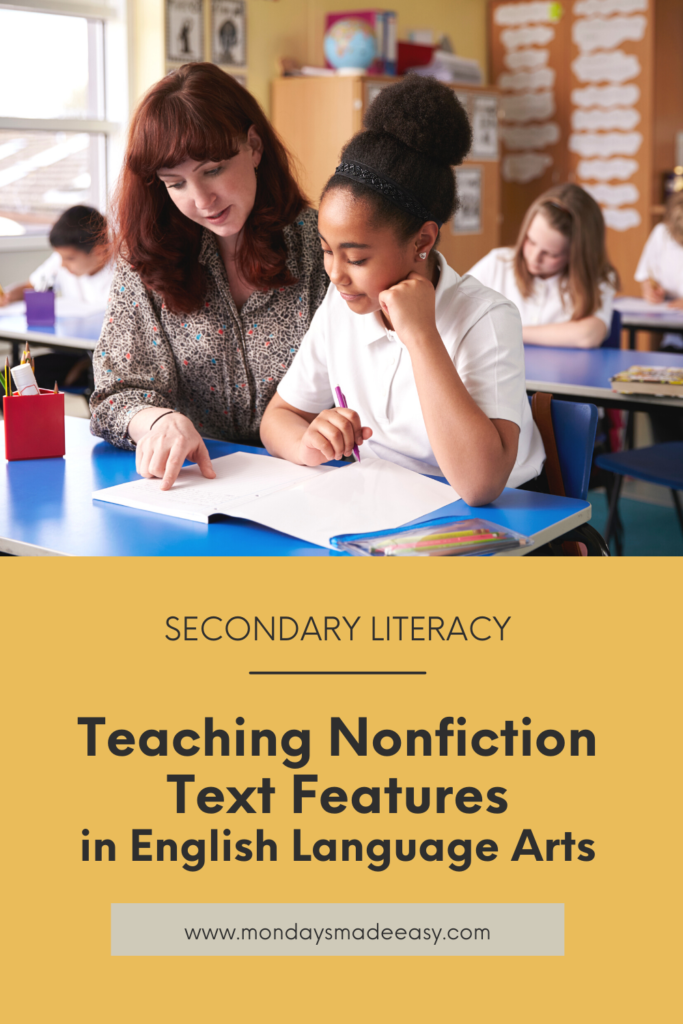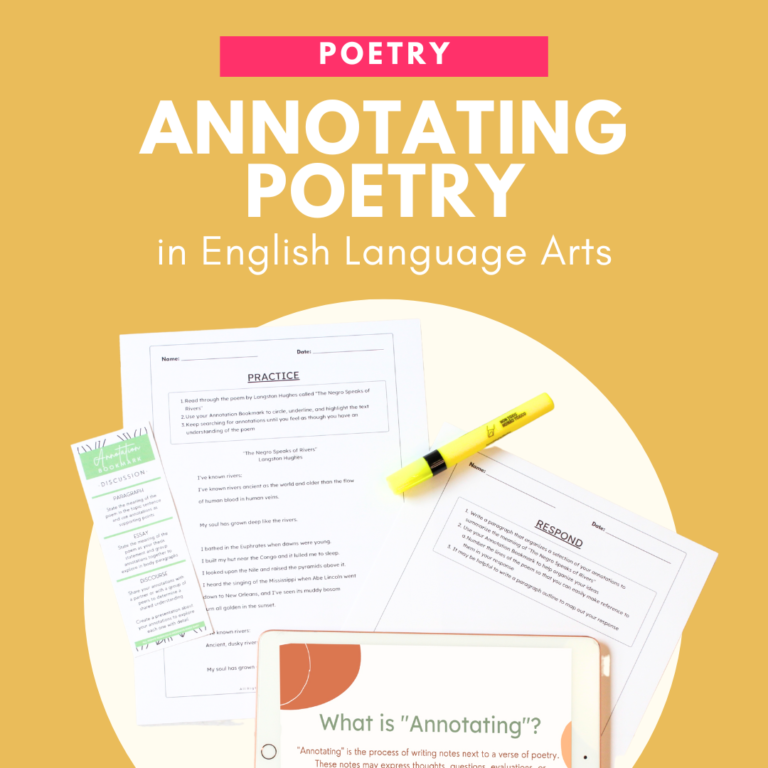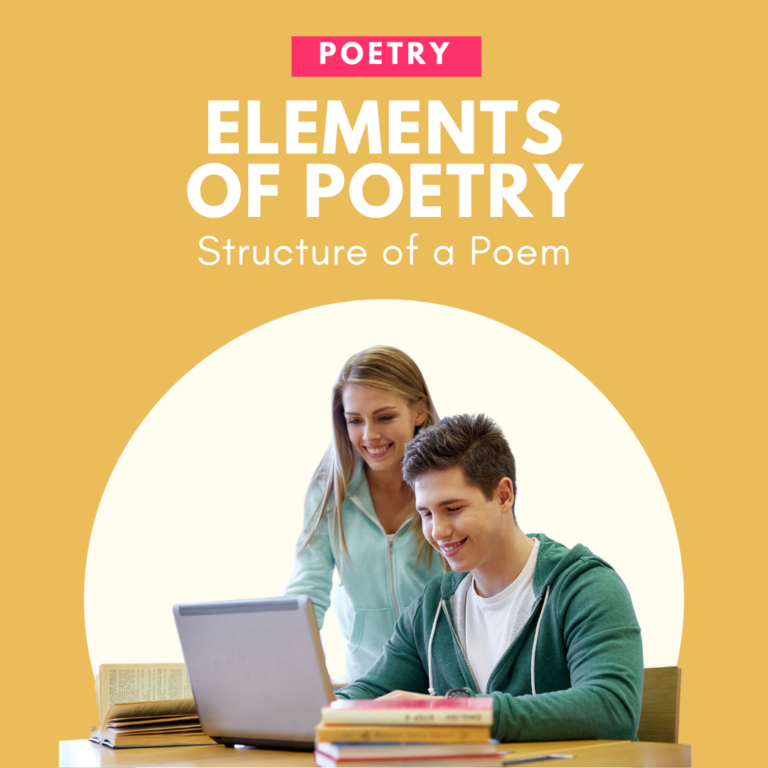Teaching nonfiction text features to older students is a key aspect of developing their reading comprehension skills. Not only does this skill equip students to comprehend and engage with texts effectively, but it also fosters their ability to navigate the complexities of informational texts.
In this blog post, I’ll highlight the importance of teaching nonfiction text features and provide different activities and lesson plan ideas. These strategies aim to empower students to become proficient readers of nonfiction texts!

What are nonfiction texts?
Nonfiction texts are written materials that present factual information and are based on real events, people, or subjects. Since several forms of media surround us in the real world, students must learn how to read and write information texts fluently; specifically, they must be able to comprehend text features to access valuable information effectively.
Why are text features important?
Text features play an important role in enhancing reading comprehension as they provide guidance for organizing content and identifying key information. When students are instructed to apply these informational text features, it enables them to enrich their comprehension while reading.

What types of nonfiction text features should students learn?
The most common types of text features that students will encounter include headings, subheadings, captions, bullet points, and illustrations. These elements help readers navigate and extract key information from the text, enhancing their ability to engage with nonfiction content effectively. Exploring these elements will help students to understand how they contribute to the organization and comprehension of nonfiction material.
Activities and Lesson Plans to Teach Nonfiction Text Features
1. Teach Using Interactive Slideshow Lessons
Explore an interactive slideshow that introduces various text features. Include real-world examples and ask students to identify and discuss the purpose of each feature. Provide opportunities for students to interact with the slideshow by answering questions or completing activities related to text features.

2. Explore Text Features using Gallery Walk Stations
Set up stations around your classroom or in the library with different nonfiction texts. Each station should focus on a specific text feature. Encourage students to rotate through the stations, examine the texts, and identify and analyze the text features they find, promoting active learning and collaborative discussion.
For example, students can explore news and web articles at different stations to search for visual, organizational, and explanatory text features, including:
- Maps
- Diagrams
- Charts and graphs
- Photographs and illustrations
- Infographics
- Italicized and bold fonts
- Table of contents
- Bullet points and numbered lists
- Author biographies
There are several other types of nonfiction text features explored in this gallery walk activity.
3. Host a Scavenger Hunt
Facilitate a scavenger hunt with a list of text features for students to locate. They can look for examples in your classroom, library, or online. Students can describe the purpose of each text feature, and after locating an example, they can explain the purpose if this type of feature.
This activity encourages independent exploration and reinforces the understanding of text features. This activity includes several nonfiction text feature posters that can also be used as a classroom anchor chart once students complete them.
4. Collaborate on a Classroom Anchor Chart
Collaboratively create an anchor chart with your students that showcases different text features. Include examples and explanations for each feature. Keep the anchor chart visible in the classroom as a reference tool for students when reading nonfiction texts.
This anchor chart explores 20 different text features that students will commonly interact with while reading nonfiction texts.

Tying it All Together: Teaching Nonfiction Text Features in English Language Arts
By incorporating these activities and lesson plans into your English Language Arts curriculum, you’ll empower your students to become proficient readers and researchers of nonfiction texts, equipping them with valuable skills for academic and real-world success.
Interested in more activity and lesson plan ideas? Take a look at the secondary literacy section on the Mondays Made Easy blog.




